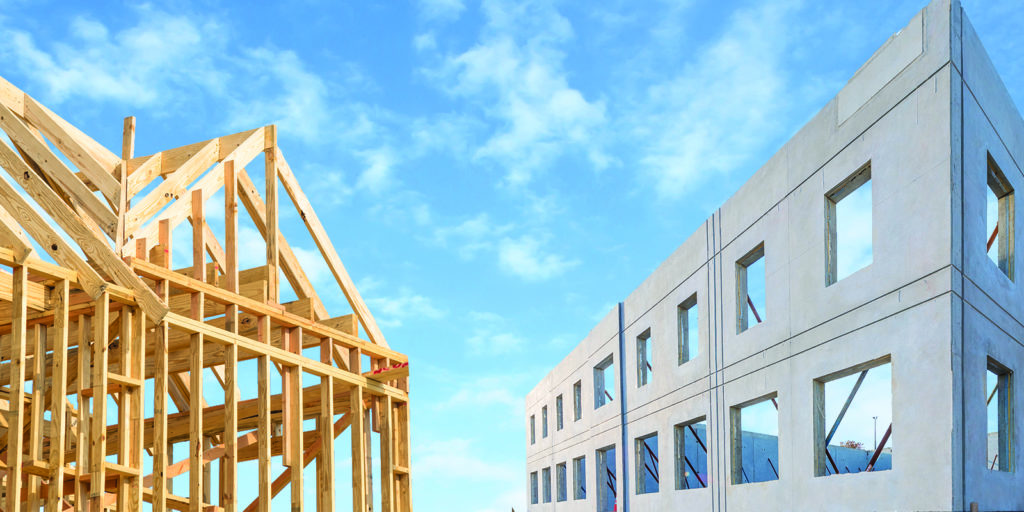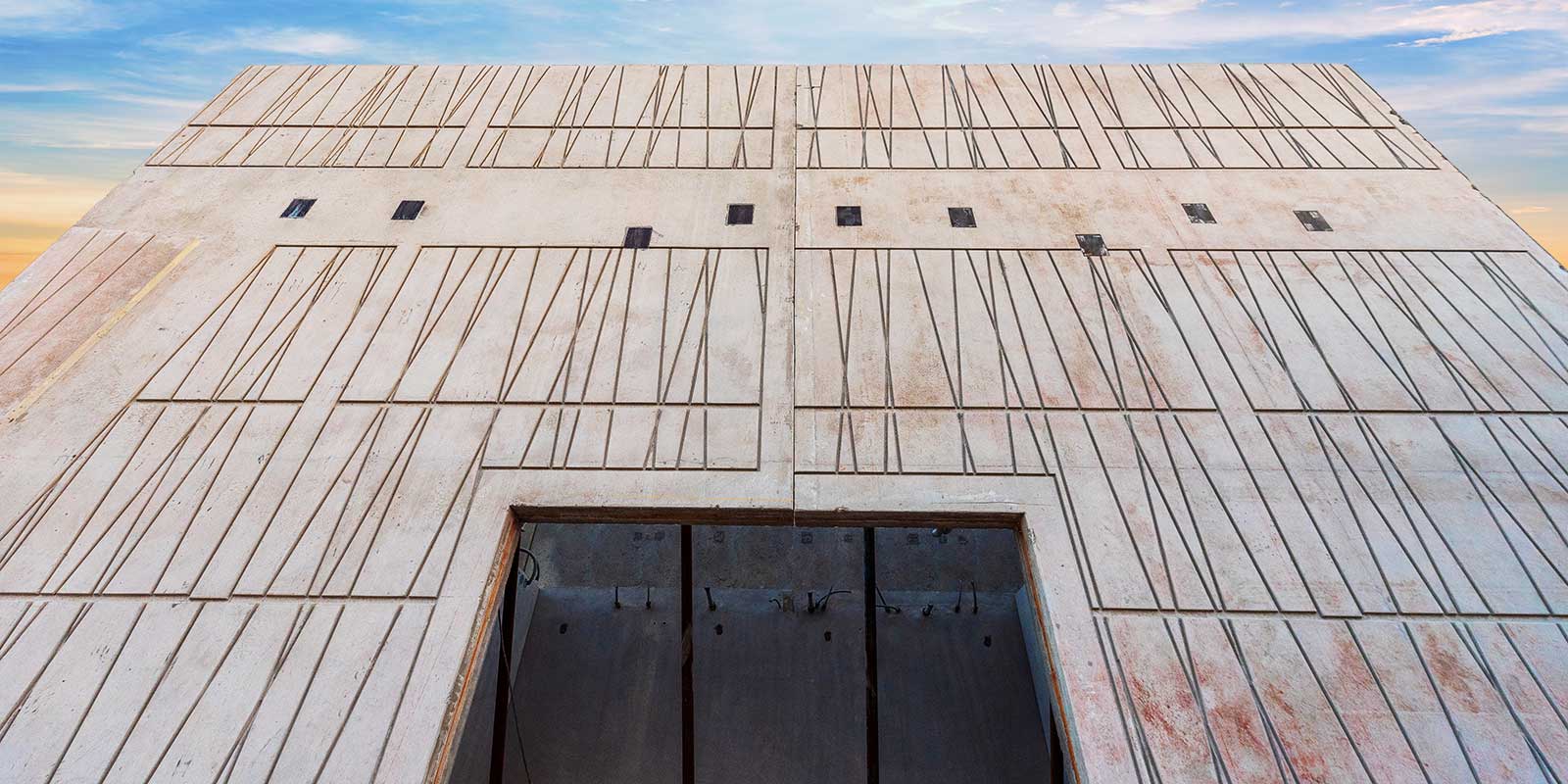Building Systems Compared – Wood Construction vs. Tilt-Up Construction

Tilt-up has more benefits when it comes to cost, durability, project timeframes and architectural versatility
Wood construction has been popular for centuries – research shows that timber homes were first built over 3,000 years ago. Thus, because of its history, wood construction is still trusted today. In contrast, tilt-up construction was developed around 1905 and has had less time to build an equally strong reputation. One might assume that wood construction is the best option because it has been around the longest. However, a comparison of tilt-up vs. wood reveals that tilt-up is actually the most effective choice.
Tilt-up is more cost-effective
Builders turn to wood because it’s cheap – it’s a natural resource and it’s readily available. But there’s more to consider than the initial cost. First, lumber prices are affected by supply and demand. Even if lumber seems cheaper on average, the price can fluctuate based on factors like bad weather or national home building trends. Lumber prices are also impacted by international tariffs.
Concrete is produced locally. Thus, it’s not subject to tariffs, and its price remains relatively steady and easy to predict. Tilt-up construction also requires fewer materials and fewer labor hours than wood construction.
Additionally, wood construction isn’t as energy-efficient. An owner of a wood-framed home or building will likely pay more in energy costs over time. Concrete actually cuts emissions by an estimated 30%.
In comparing the costs of concrete vs. wood, concrete reigns supreme with less volatile pricing, cheaper construction costs, and lower energy costs over time.
Tilt Wall adjusts its process for a massive building
Wood-framed structures require a lot of maintenance as they age. They’re susceptible to factors like moisture, mold, termite infestation, swelling, and shrinking. In fact, wood structures are almost certain to experience damage at some point in their lifetime. The threat of damage leads to quicker structural depreciation and shorter lifespans.
Concrete buildings aren’t vulnerable to the same issues. Additionally, concrete can withstand natural disasters and weather events, and it has better fire resistance. As a result, concrete has a lifespan that’s two to three times longer than other building materials, and concrete buildings can last as long as 100 years.
Again, when comparing tilt-up vs. wood construction, tilt-up comes out on top.
Tilt-up enables shorter project timeframes
It’s important to note that construction timeframes are ultimately dependent on a number of factors, including weather conditions and the complexity of the building plans. However, on average, tilt-up construction is faster than wood construction. For example, tilt-up concrete homes can take as little as 3 – 4 months. The wall panels are assembled using a crane, electrical and plumbing are embedded in the concrete, and additional components, like the roof, are constructed off-site. These steps streamline the process and shave time off the construction schedule. Wood-framed homes are a different story. The wood has to be assembled by hand, and specialty trades are called in for electrical, plumbing, drywalling, cladding, and insulation. The resulting process can take 6 – 12 months.

Tilt-up construction provides more architectural versatility
Wood construction is quite limited when it comes to design. For example, it’s difficult to add features like large windows, large spans, or cantilevers. Also, renovating a wood-framed structure is a lengthy and costly process that often requires rebuilding. Tilt-up provides more flexibility. Concrete panels can be easily moved or modified to create new openings or expand existing structures. With tilt-up construction, you can create bolder designs from the start and you can continue making adjustments as your needs change.
Tilt-up construction is more sustainable
As mentioned earlier, concrete has a much longer lifespan than wood or other popular building materials.
Over time, it reduces energy use and heating and cooling expenses because its thermal mass helps maintain internal temperatures.
Also, concrete generally puts less strain on the environment. It’s often made with limestone, which is one of the most abundant minerals on the planet. And, tilt-up construction results in less waste than wood construction. Wood framing is cut by hand on-site, which results in human error and a lot of shaping and resizing of lumber.
In comparing tilt-up vs. wood construction, tilt-up is the clear choice. It’s more cost-effective, it’s safer and more durable, it reduces project timeframes, and it’s more sustainable. For your next project, use tilt-up construction for a reliable structure with lasting value. Contact Tilt Wall today to get started.
